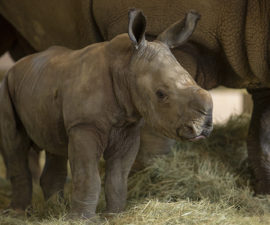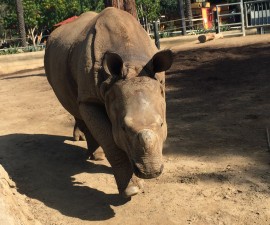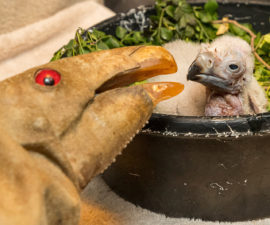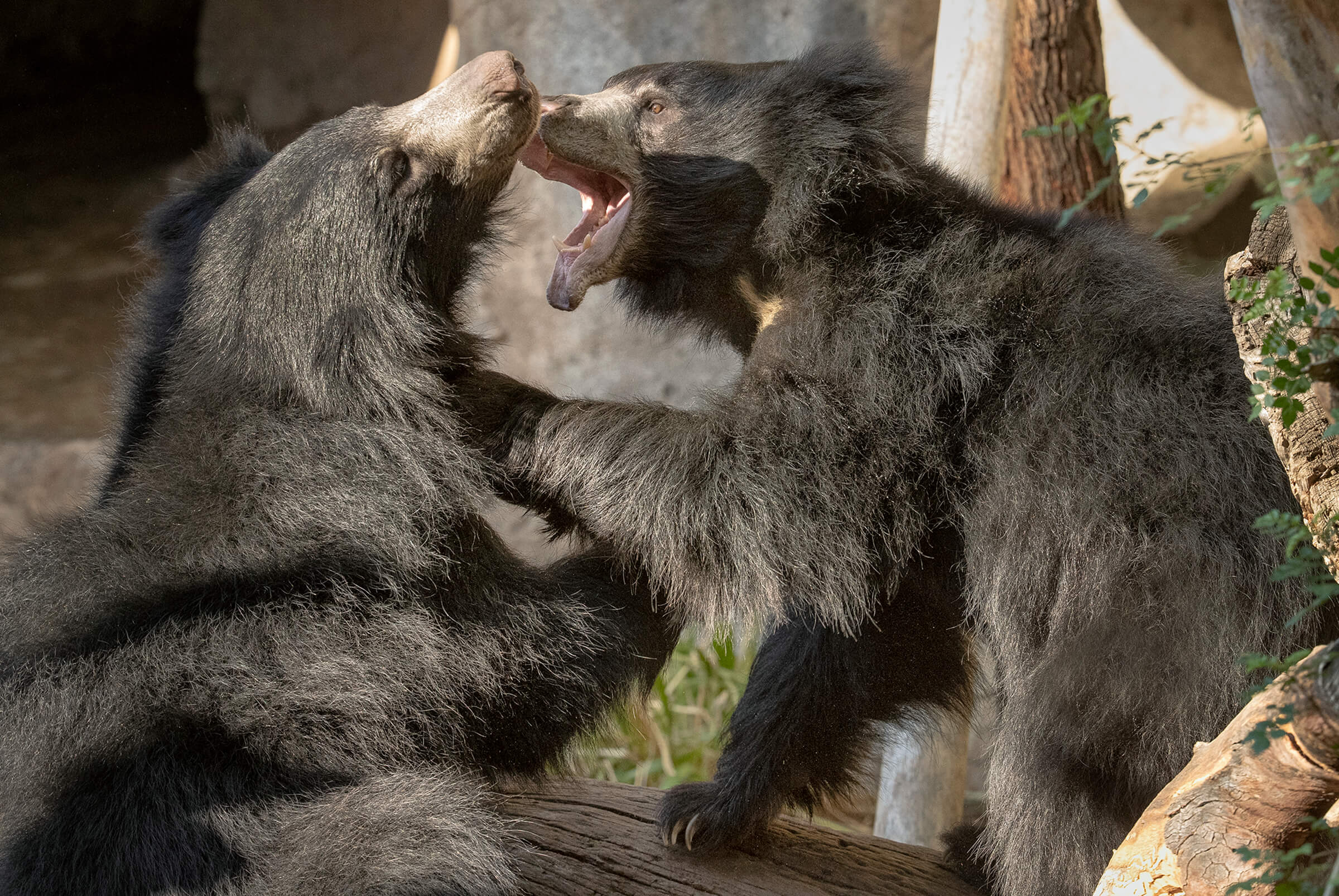
Two Much Fun
There’s Never a Dull Moment for the Zoo’s Playful Sloth Bear Brothers Deemak and Kartick
BY Eston Ellis
Photography by Ken Bohn
If you’ve been to the San Diego Zoo, you’ve probably seen polar bears, grizzlies, and maybe even giant pandas in past years. But have you ever seen a sloth bear? The name isn’t much help in describing this native of southern Asia and the Indian subcontinent, as sloth bears are definitely not slow, and the pair of two-year-olds that arrived at the San Diego Zoo in September are especially energetic. You might see them skillfully traversing branches or lounging high in their climbing structure, but unlike sloths, they do not spend most of their time in the trees.
So, how did they get the name “sloth bear”? This medium-size bear—with an adult body length of four to six feet—gets its name from its thick, three-inch-long claws. Instead of using these non-retractable claws to hang from branches as sloths do, sloth bears use them to rip apart rotting logs to find their favorite food: termites. The tousled, wild hair around a sloth bear’s ears, shoulders, and neck resembles the shaggy hair of a sloth. When a sloth bear mom is on the go, her cubs grab onto her long hair and she carries them around on her back, starting when they are about two months old. Cubs stay with mom until they are about a year and a half old.
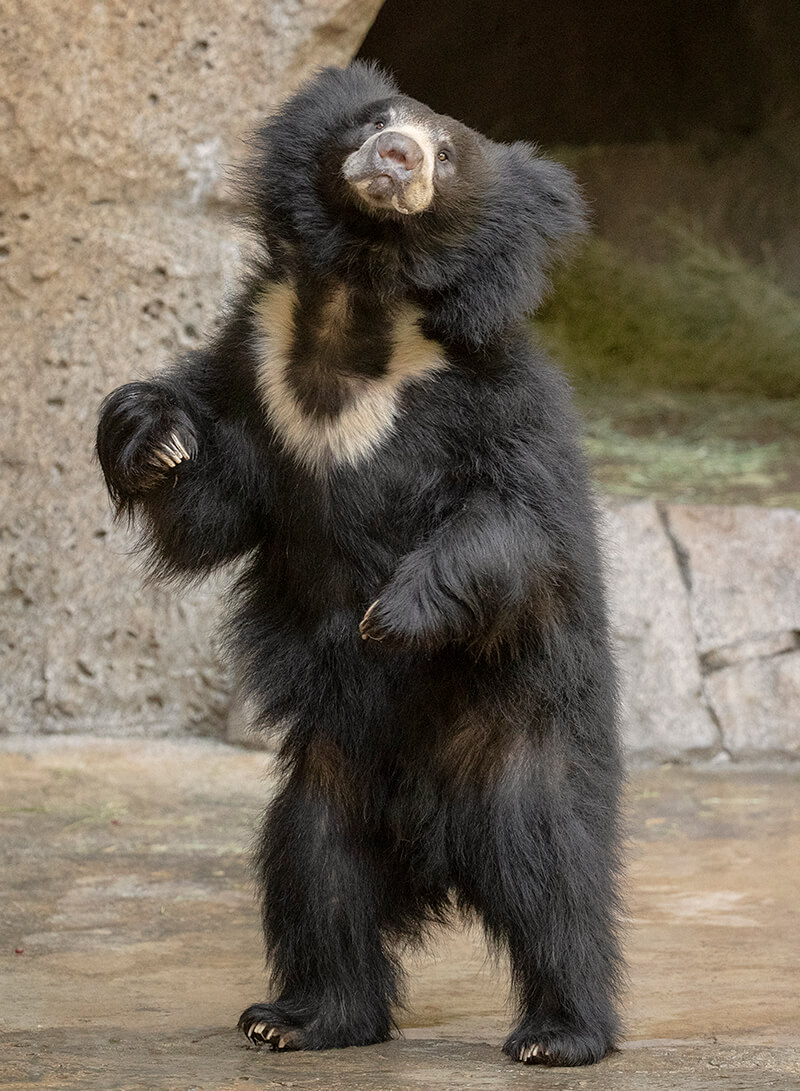
A DISTINCTIVE APPEARANCE
Sloth bears (like Kartick, shown here) have a longer snout than most other bears, long claws, U- or chevron-shaped chest markings, and long hair around the ears, shoulders, and neck.
Sloth bears Melursus ursinus live in hot, dry grasslands and forests in Bangladesh, Bhutan, India, Nepal and Sri Lanka. They have distinctive chevron-shaped or U-shaped chest markings, a long muzzle (longer than that of other bears) with an elongated snout, lips that can form a tube shape, allowing them to feed by noisily suctioning ants and termites right out of their nest mounds, nostrils that they can close when feeding on termites and ants (to avoid inhaling dirt), and prominent ears covered in long hair. Sloth bears’ upper incisor teeth are effectively missing, which helps them to more easily vacuum up insects. In the wild, most of a sloth bear’s diet consists of ants and termites, although they also eat fruit, vegetation, flowers, honey, sugarcane, and sometimes grubs, eggs, and carrion. In their native habitats, sloth bears play an important role in their environment, reseeding forests and grassland areas by distributing seeds they eat, in their scat.
The San Diego Zoo has a long history with sloth bears, first welcoming two Indian sloth bears in 1940, and later, in 1979, becoming the first Zoo in North America to exhibit Sri Lankan sloth bears. The first Sri Lankan sloth bear cub ever born and raised in the Western Hemisphere was born at the Zoo in 1985, and many other sloth bears have called the Zoo home in the more recent past, including a bear named Kenny, who could imitate one of the keepers making a “raspberry” sound as a greeting.
The Newest Arrivals
Two-year-old sloth bear brothers Deemak and Kartick arrived at the San Diego Zoo on September 2, 2019 from Seattle’s Woodland Park Zoo, and they moved into their new exhibit at the top of Center Street on November 7. Deemak’s name means “termite” in Hindi; and Kartick was named for Kartick Satyanarayan, co-founder of Wildlife SOS, an organization that works to protect sloth bears in their native habitats and rescue bears from abuse, injury, or death due to illegal wildlife trafficking.
Both the Woodland Park Zoo and the San Diego Zoo participate in the Association of Zoos and Aquariums’ Species Survival Plan (SSP) program, which is designed to help create a healthy and genetically viable population of threatened and endangered species in accredited zoos. The brothers came to the San Diego Zoo in an SSP-recommended move, at an age when they would normally leave their mother. This will allow their mother to have additional cubs, helping to increase the population of this species, which is categorized as Vulnerable on the International Union for Conservation of Nature (IUCN) Red List of Threatened Species.
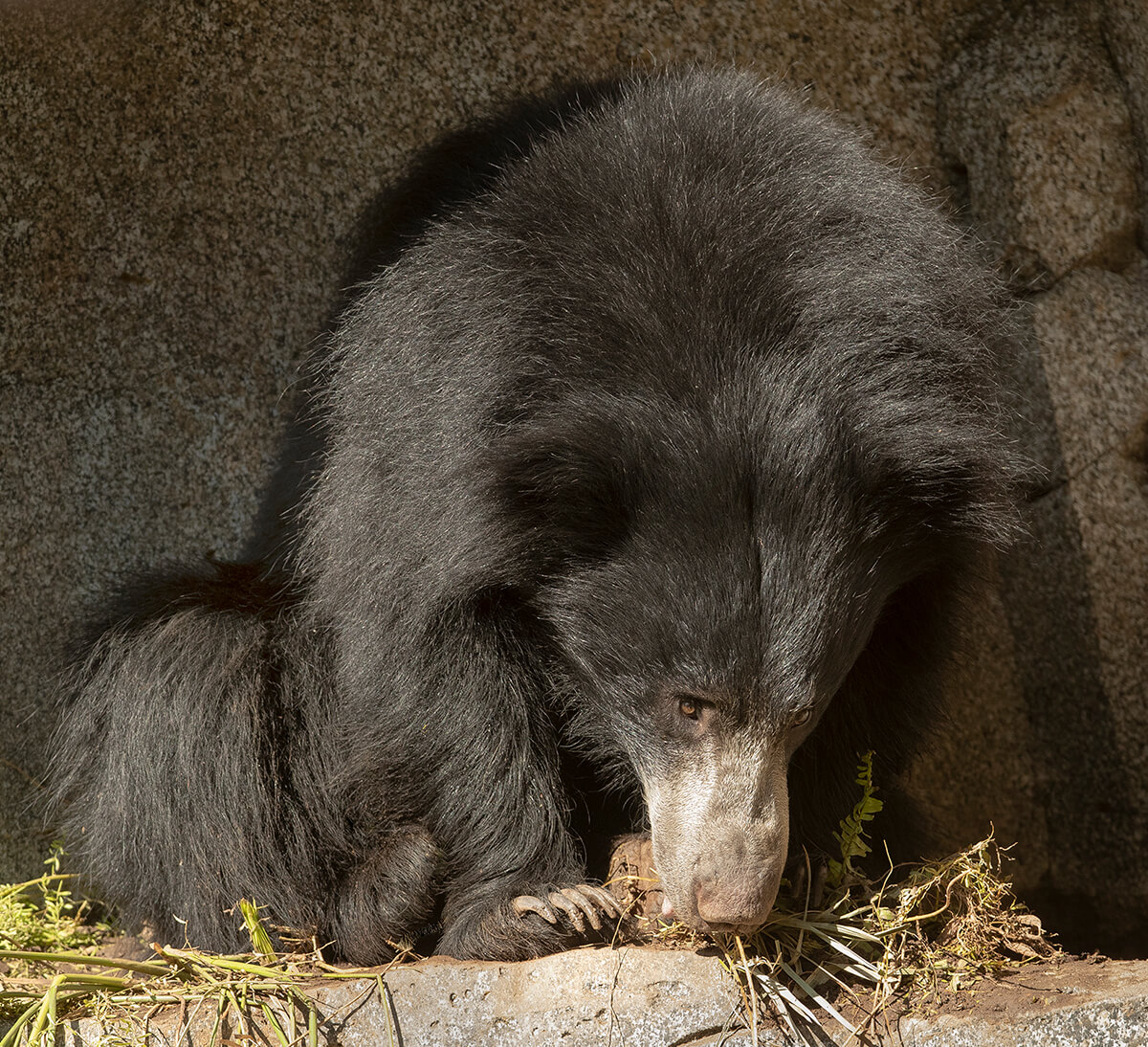
FINDING TREATS
Food items, including some of the sloth bears’ favorite insects, are scattered or hidden throughout their habitat at the Zoo, waiting to be discovered.
Senior keeper Hali O’Connor visited with the sloth bear keepers at the Woodland Park Zoo and then traveled with the brothers from Seattle to San Diego. After their quarantine period, here, she helped introduce them to their new home, at the top of Center Street. “They acclimated pretty quickly, and they have been enjoying exploring and investigating just about every inch of their new surroundings,” Hali explained. “It was utter and complete destruction,” she said, with a laugh. “They’re doing what bears do: digging, tearing up vegetation, and pulling apart old logs to search for termites and other insects.”
When they’re not “redecorating,” the brothers can be seen wrestling, enjoying their pool, exploring their habitat’s climbing structures, relaxing in their hammock, finding scattered food, uncovering new enrichment objects, and generally doing all the things young bears do. The two are very close buddies, and are often taking naps side by side and playing each day, Hali said. “They’re young boys that are having a lot of fun together.”
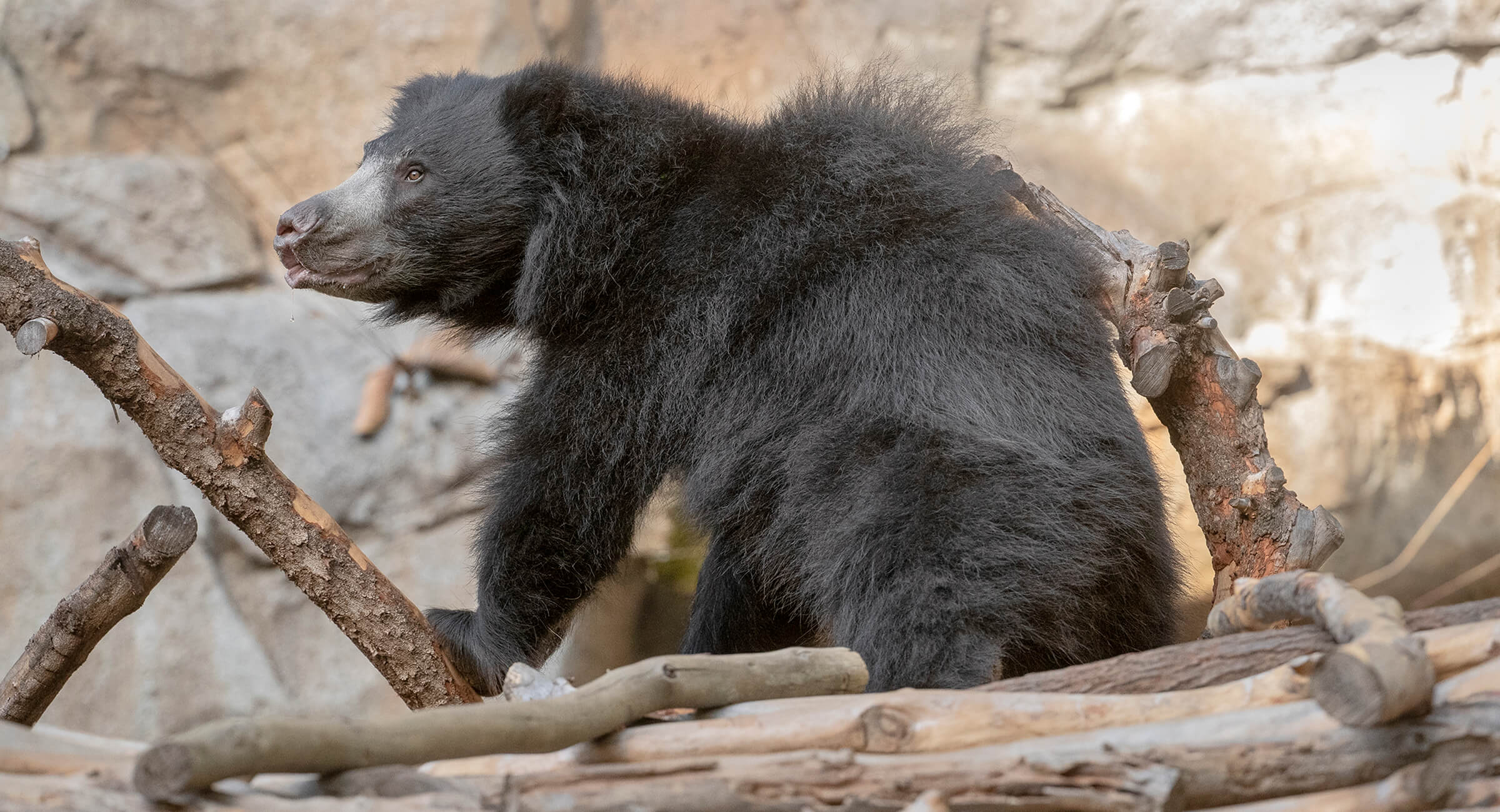
Meet the Bear Bros
What happens when you meet a sloth bear for the first time? “The first time they meet somebody, like a new keeper, they may do this big, explosive reaction that ends with them making a big noise with a puff of air—then, they get over it really fast,” Hali said. “That first experience can be a little dramatic, but it doesn’t take too long for them to get acclimated.”
Telling the brothers apart is easy, if you think of their names, Hali explained. “Deemak has dark front claws—think “D” for dark, and Deemak. He also has what I call a poof of hair around his shoulder areas. Kartick, on the other hand, has light front claws and evenly messy hair.”
Deemak seems to be the more gregarious brother, and he is often the first to explore new things; Kartick’s technique is more thoughtful and cautious, Hali said. “When the bears come to our protected contact areas for keeper interaction and training, Kartick’s approach is a little gentler, whereas Deemak is very attention seeking. He’s the one who comes up first, and Kartick comes up behind him. Deemak might be a little more dominant, at least at this stage.”
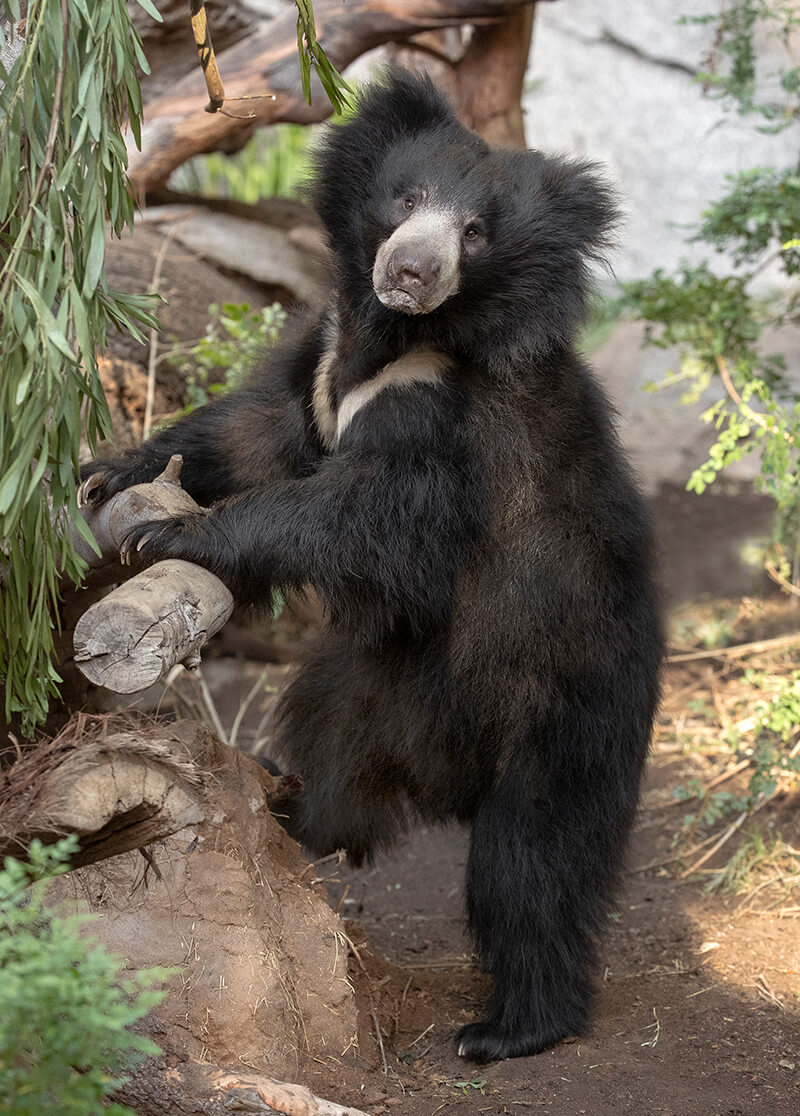
ESSENTIAL CLAWS
Sloth bears’ three-inch-long, non-retractable claws are ideal for tearing logs apart to find termites to snack on, and for climbing trees.
The bears enjoy mid-day naps, as they start their day very early. “They’re already up and awake when I get here in the dark, as I’m checking on their sleeping neighbors,” Hali said.
There’s always something new for the bears to discover in their exhibit, as keepers provide changing, enriching experiences. Along with various types of animal scents, the bears may find burlap bags to use as blankets, new objects floating in their pool, balls with hidden food compartments, new logs for shredding, and many different substrate choices. In addition, food items are scattered and hidden throughout their surroundings, including insect favorites such as mealworms. Keepers may also stuff insects into crevices, so that the bears must use their natural puffing and sucking behaviors to retrieve them. In addition, the bears have two artificial termite mounds that Zoo volunteers built for them, with PVC tubing inside where keepers can insert treats.
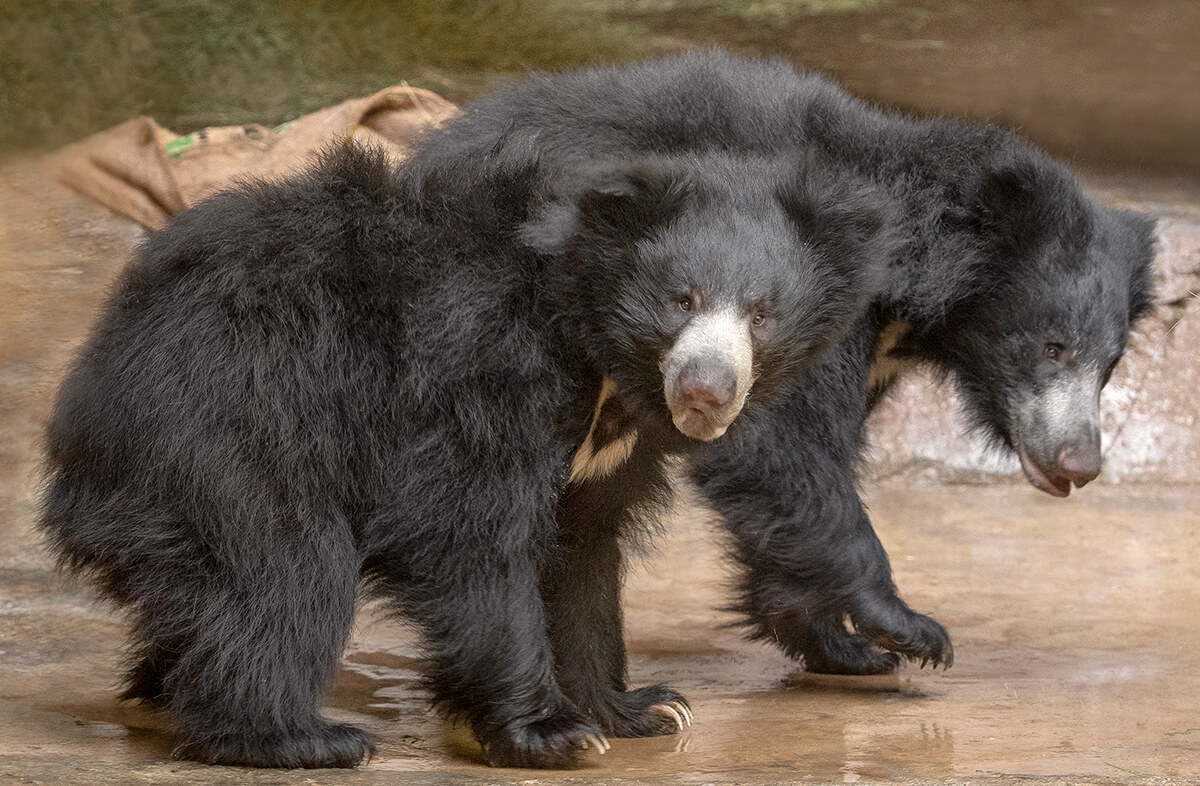
DYNAMIC DUO
While adult sloth bears tend to be solitary, two-year-old brothers Kartick (left) and Deemak seem to revel in the time they spend together, wrestling, playing, and exploring their new habitat at the Zoo.
They get a nice varied diet, Hali said. It includes ground meat, a selection of kibbles such as cinnamon-flavored primate biscuits, insectivore diet, dog food, insects, and a wide variety of fruit. They are not too fond of vegetables, but do enjoy corn on the cob and peas, and will eat some squash. Keepers continue to try previously refused foods, since bear tastes can change with the seasons and as they mature.
The bears also get treats at various intervals from automatic feeders, including a belt feeder at the top of one ledge in their exhibit. Other foods are provided as enriching experiences, which include whole food items they have to work at to enjoy—including coconuts, melons, and femur bones.
The two bears are growing fast, but they will not reach maturity until they are three to five years old. They each currently weigh about 187 pounds, and as they grow older, they could eventually weigh as much as 320 pounds.
While young bears enjoy playing and learning about their environment together, mature sloth bears tend to be solitary animals, except during mating season or when a female is raising cubs. “As the boys mature, we’ll be paying attention to when they might want more independent time,” Hali said. “As all adult bears eventually venture out on their own, we prepare for that. But right now, they are relying on each other for support, playing, wrestling, and enjoying each other’s company.”
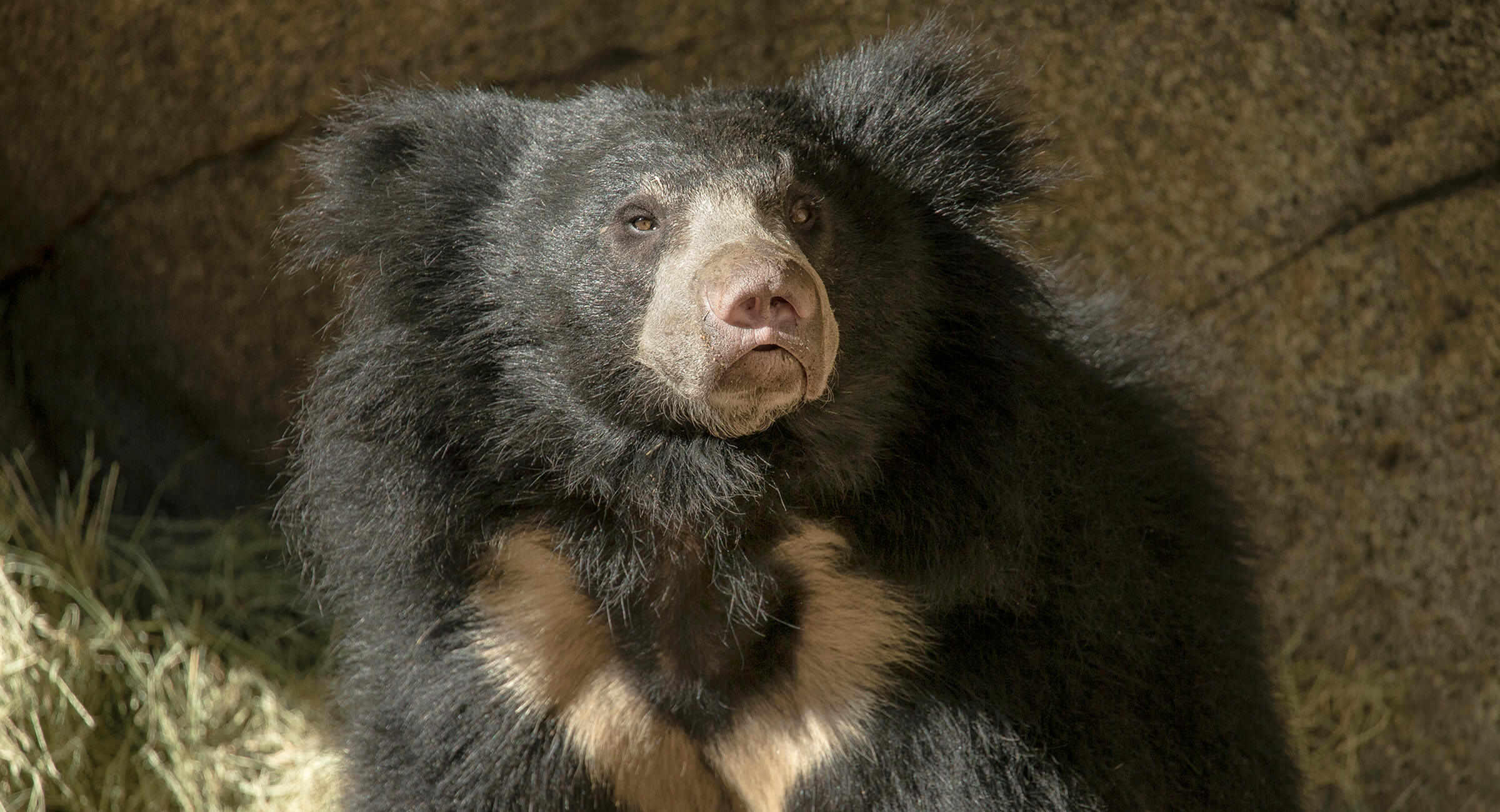
Help for Sloth Bears
Sloth bears have an expected life span of 20 to 30 years, and the oldest known sloth bear reached age 40. While Deemak and Kartick have many years of adventure ahead of them, sloth bears in their native habitats continue to face numerous threats to their survival, including habitat destruction from human development, and poaching for illegal wildlife trafficking. Sloth bears in Asia are still being killed for use in folk remedies and exotic cuisine. Until recently, hundreds of sloth bear mothers were killed and their cubs were taken by people who mistreated them while training them to become “dancing bears,” to earn money from villagers and tourists. This practice is now rare, thanks to efforts by organizations in India, including Wildlife SOS, which works to rescue sloth bears from wildlife trafficking, fights animal cruelty, and works with local communities to prevent human-animal conflicts. San Diego Zoo Global has partnered with Wildlife SOS and supports the organization’s ongoing efforts to help sloth bears survive in their native countries.

